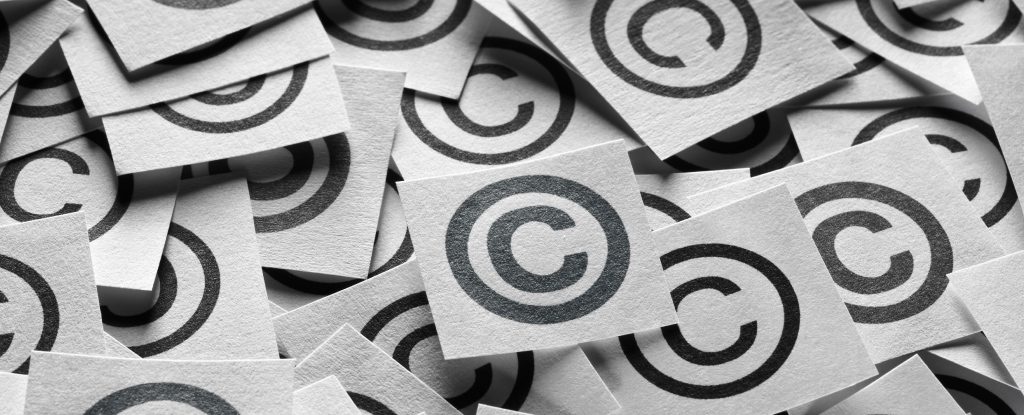When copyright cases are taken across international borders, things can get messy. The reason for this is largely due to the way different parts of the world view what a copyright actually is. Below we’ll cover everything you need to know about the differences between European copyright and U.S. copyright.
The term ‘copyright’ is often used as a synonym for the German word ‘Urheberrecht’ (here referred to as European copyright), although the two are, in reality, quite different entities. Whilst European copyright focuses directly on the originator of the work in question, US copyright is directed towards exploitation rights and any potential financial implications. In this article, we will take a deeper look at the difference between the two systems.
- Overview of all Topics:
- Who Is the Originator?
- European Copyright
- What Does Copyright Mean?
- Differences between European and us Copyright in Detail?
- Balancing the Interests of the Copyright Holder and Those of the General Public
- Benefits of Registering for Copyright
- The Copyright Symbol ©
- Who Is the Originator and Who Is the Rights Holder?

Who Is the Originator?
In the context of European copyright, the originator is the person who created the work in question. The copyright belongs solely to this individual and cannot be transferred to a third party. The originator can, however, simplify the process of allowing a third party exclusive rights to the work in the form of licensing. This has traditionally been the most common form of copyright law in continental Europe.
According to §10 of the UrhG (German Act on Copyright and Related Rights), being the originator of a work can simply mean being the person who designates themself as such. It is therefore important to mark your own work and to have it recognized by a third party.
This so called proof of priority is a requirement of stipulation §10 of the UrhG, which states that:
“The person designated as the author in the usual manner on the copies of a released work or on the original of an artistic work shall be regarded as the author of the work in the absence of proof to the contrary; the same shall apply to any designation which is known to be a pseudonym or stage name of the author.”

European Copyright
It is clear from the German term ‘Urheberrecht’ (literally: originator’s rights), that the originator is the central figure in this form of copyright law. This sentiment is echoed across the major languages of continental Europe; in Italian it’s called ‘diritto d’autore’; in French, ‘droit d’auteur’; in Spanish, ‘derecho de autor’; in Dutch, ‘auteursrecht’; in Swedish, ‘upphovsrätt’ and in Polish, ‘prawa autorskie’. In all of these languages, the originator of the work is named explicitly in the name for copyright itself. The application of copyright law in the aforementioned countries is also based upon the same principles. You can find out more about differences in European copyright law in our blog post titled, ‘Copyright Law in Europe Explained’.

What Does Copyright Mean in the Anglo-American Sense of the Word?
The term copyright is broadly used in major English speaking countries like the USA, the UK, and Canada. US copyright works differently to European copyright in that it can be passed to a third party like any other object of financial value. Unlike in the German understanding of the law, the holder of the copyright doesn’t have to be the originator of the work itself. Instead, they can simply be the owner of the permission and licensing rights.
Historical Roots of European and U.S. Copyright
The differences between European and US copyright can be better understood when we take a look at the historical contexts in which they first appeared. European copyright arose from the humanistic and creative atmosphere of the French Revolution (1789-1799), during which time the first modern copyright laws were formulated.
The English term copyright, meanwhile, is traceable to the ‘Statute of Anne’ from 1709. Copyright was originally aimed at improving education and the circulation of knowledge by protecting the rights of publishers who wanted to ensure against the unlawful reproduction of manuscripts for which they had paid a lot of money.

What Are the Differences between European and U.S. Copyright in Detail?
European copyright protects the originator whilst US copyright protects the rights to use the work in question. US copyright is therefore first and foremost directed towards the financial side of things, whilst European copyright looks to protect the creator of the work. These differences are to be found in the very translations of the word copyright in different European languages.
Moral rights are included in European copyright as to protect the originator’s relationship to their own work. The copyright holder also maintains the explicit right to be acknowledged in German law. It is up to the copyright holder to decide how best to display their copyright status. The copyright holder also maintains the right to protection against defacement of their work. It is important to note that in German law, the moral rights of the copyright holder are ranked higher than the financial rights of the owner. In contrast, the moral rights of the originator are less clearly highlighted in US copyright law.
-
Both European and US copyrights protects the economic interests of the publisher and uphold the public good of the work.
-
In European copyright, it’s impossible to pass copyrights in their entirety to a third party. This is unless the originator dies, in which case the copyright passes to their estate or is removed completely.
-
In US copyright, the entirety of a copyright holder’s rights can be passed to a third party. This is how the public domain was created. Resale of copyright is also possible in US copyright law.
-
In European copyright law, the copyright holder of the work is always the creator of the work itself.
-
This isn’t necessarily the case in US copyright law, where the rights to ‘work made for hire’ can pass automatically to the employer depending on the specific employment conditions.

Balancing the Interests of the Copyright Holder and Those of the General Public
Both European and US copyright must straddle the gap between the interests of the copyright holder and those of the general public. There are two main approaches to doing this:
In European copyright law, there are certain exceptional cases in which the use of copyright protected work can be permitted. The private use of work for teaching or research purposes can be filed under this category. Similar rules exist in most of the countries of continental Europe. Exceptions can usually be defined by a three step test. It states that the rights of the copyright holder can only be restricted in certain exceptional circumstances (1) in which the the normal ownership of the work has been compromised (2) and the rightful interests of the copyright holder are not unreasonable threatened (3).
In contrast, US copyright uses the term ‘fair use’, which states that in certain contexts, it is possible to use protected work without the permission of the copyright holder. Another US copyright term to be aware of is the ‘first sale doctrine’, which states that work already on the common market can be resold without restriction. In the Commonwealth, the ‘fair dealing’ rule allows for a small number of copies of a work to be made, provided that they are to be used privately for study, writing reviews or compiling reports.
The main factors to take into account when questioning whether the use of a work has been fair or not are as follows; the purpose and type of use, the type of protected work in question, the importance of the new work in relation to the original work, and whether the new work has had any negative effect on the original.
Other important factors include whether or not the new work is made for profit or for private use, whether it was used for educational or advertising purposes, and whether the whole of the original work was used or only a part of it. The less the rightful interests of the copyright holder are infringed, the more likely it is that the work has been fairly used.

Benefits of Copyright Registration
As with European copyright law, in the US a work is automatically protected as soon as it has been created. This means that registering for a copyright is not actually compulsory in order to hold the copyright to an image.
In practice, however, copyrights are often registered, because in the event of a copyright infringement, registration has the advantage of making it quick and easy to prove copyright ownership. When it comes to damage claims, copyright registration can be used as a form of evidence in international court proceedings. Moreover, under US copyright law, registered copyright holders receive even more benefits as the US system is more favorable towards copyright registered work.
What many authors don’t know is that in the event of a lawsuit, the plaintiff photographer must not only explain but also prove that they are the author of a photo if the other party disputes it. This means that they must prove they are the person who took the picture and, while there are many ways to prove this, copyright registration is often the easiest.
In some countries, national registries such as the US Copyright Office have already been established. Recently, however, photographers have also been able to register their images online and have them verified worldwide via the blockchain-based global copyright registration company Concensum.

The Copyright Symbol ©
The early stages of the copyright symbol can be traced back to the USA, where copyright registration was still considered compulsory until 1989. The famous © symbol has been used ever since to delineate copyright protected work. The copyright symbol appears together with the name of the rightsholder, often accompanied by the word ‘copyright’ and the date of the first publishing.
The © symbol has no meaningful use in Germany, other than as a globally recognisable reminder that a work is copyright protected. It can be used in Germany but only in cases where the correct copyright procedures have been completed. Attention must be paid to cases where copyright is used together with the work of a third party or if the copyright holder is incorrectly named, whereby injunctions and compensation claims can be brought against the copyright holder themself.
Even though new work is automatically protected these days, the © symbol is still commonly found. The benefit is that users are made directly aware of the fact that copyright is in place. It also helps to discourage potential thieves and to protect against those who still believe the fallacy that work without the symbol is not copyrighted. The copyright symbol is often displayed together with the name of the copyright holder, which can save time and effort when it comes to proving the copyright in court. In the European system, the copyright holder is the person who is named together with the work. In such cases, a © symbol is not needed.
Who Is the Originator and Who Is the Rights Holder?
The European and US varieties of copyright form the two main types of possible copyright protection. Although the two terms are often interchangeable, they are based upon quite different philosophies. The German system aims to protect the ideal relationship between the creator of a work and their work itself, whilst maintaining a broad overview of the financial aspects. US copyright, on the other hand, protects the rights of use to the work in question with a strong focus on the economic interests of the copyright holder.
Written by Florian Moritz & Dr. Daniela Mohr

